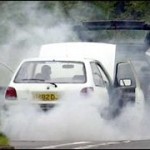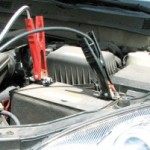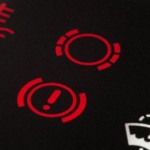What those lights on your dashboard really mean
When her car’s dashboard warning lights came on, Selma Barron knew just what to do: Take her 2007 Lexus sport utility vehicle to the dealer to find out what was going on.
Barron, of Hollywood, Fla., had not one but three lights illuminate suddenly. One said “VSC,” one said “TRAC OFF” and one that was a general malfunction light. The local dealer traced the problem - to the car’s “vehicle stability control” - and corrected it and Barron and her Lexus were back on the road.
Since the introduction of OBD, or “on board diagnostics” in the 1970s, warning lights have meant more than just telling you there’s a problem. Onboard computers receive and store codes that help a mechanic determine what is wrong: Using a scanner, plugged into the vehicle’s computer, a technician was able to pinpoint Barron’s problem with her Lexus. The diagnostics may not be able to say exactly what the problem is, but they allow mechanics to narrow the possibilities quickly.
Some lights require immediate attention; some are less compelling.
As OBD systems improve, the information they store becomes more detailed. “The system can store 7,000 separate codes,” said John Nielsen, AAA National Director of Auto Repair and Buying. The plug-in scanner reads those codes, and each one pertains to a part of the vehicle. And while it isn’t possible to have 7,000 separate warning lights on your dashboard, many manufacturers, using digital readouts, can offer much more information than one simple light could provide.
The majority of new vehicles, though, have multiple warning lights. Turn your engine off, then turn it to the “accessory” position, right before the starter engages, and briefly, all the warning lights will illuminate. If you’re lucky, that’s the only time you’ll see them, but it’s a good idea to match the symbols to the information in your owner’s manual to get an idea of how to respond if a warning light illuminates.
Here are some key warning lights:
The tire pressure light (usually a tire symbol with an exclamation point) comes on when one or more tires are significantly underinflated, Nielsen said. This may be the result of gradual pressure leakage over time or a puncture. If the tire pressure monitoring system displays individual tire pressures, check the dash display: If the pressures are all within a few pounds of one another, the warning is probably from gradual leakage. Check and adjust the tire pressures as soon as possible.
If one pressure is significantly lower than the others, a puncture is likely. Some vehicles just have a general tire monitoring light, and it doesn’t provide specific information for each tire. Look for one tire that appears lower on air than the others. Be aware, though, that these monitors can malfunction, especially in cold weather.
The oil pressure light (usually an oil can symbol or the word “OIL”) illuminates when there is a drop in engine oil pressure, Nielsen said, and you should take it very seriously. Of all the warning lights, the oil pressure light indicates the greatest potential for serious mechanical damage. Drive slowly to a safe place, pull over and call for help.
The engine temperature light (usually a thermometer symbol or the word “TEMP”) comes on when the engine temperature has exceeded the safe maximum. If the increase in temperature is not stopped, major engine damage can occur. If there are no other overt signs of overheating, such as steam or liquid coolant coming from under the hood, roll down the windows and turn on the heater full blast as you drive at a reduced speed. If the warning light stays on after a couple of miles, pull off the road at the first safe opportunity and call for help.
The charging system light (usually a battery symbol or the word “ALT”) illuminates when the vehicle electrical system is no longer being supplied power by the alternator. It’s serious, but driving the vehicle to a safe place usually won’t cause more damage.
The check engine light (usually an engine symbol with the words “CHECK ENGINE SOON”) typically comes on when there is a problem affecting the vehicle’s exhaust emissions. If the check engine light comes on and stays on, make an appointment with an auto repair shop to have the problem checked as soon as possible. But if the check engine light begins flashing repeatedly, the catalytic converter may be overheating, and it could be dangerous to keep driving.
What to do
When there is a warning light on your dashboard, it means your onboard computer has stored a “trouble code” that can be read by a technician with a “scan tool,” a device that looks like a cell phone that plugs into your car’s computer. That code will guide a technician to the problem.
But who should you get to check your system? Some shade-tree mechanics buy a basic scan tool (usually $100 or so) and do it themselves, and many auto parts stores offer a “code reading” service, often for free, and it is possible they can help locate a minor problem such as a loose gas cap. More serious issues, though, should be diagnosed by a professional.
And how do you find one? Word of mouth is one of the best ways, AAA’s John Nielsen said. “And once you find a shop you like, establish a relationship with them. You didn’t do business with a business; you do it with people.” Have the shop do all your service work, from oil changes to rotating tires, Nielsen said, so you get to know them, and they get to know you, and your vehicle.
And if you have no repair shop, Nielsen suggests you visit AAA.com. Even if you aren’t a member, you can access AAA’s data base of about 8,000 approved shops, which are inspected several times a year. Type in your ZIP code, and you’ll get a list of nearby shops.
Article source: http://www.mercurynews.com/cars/ci_17583840?nclick_check=1









